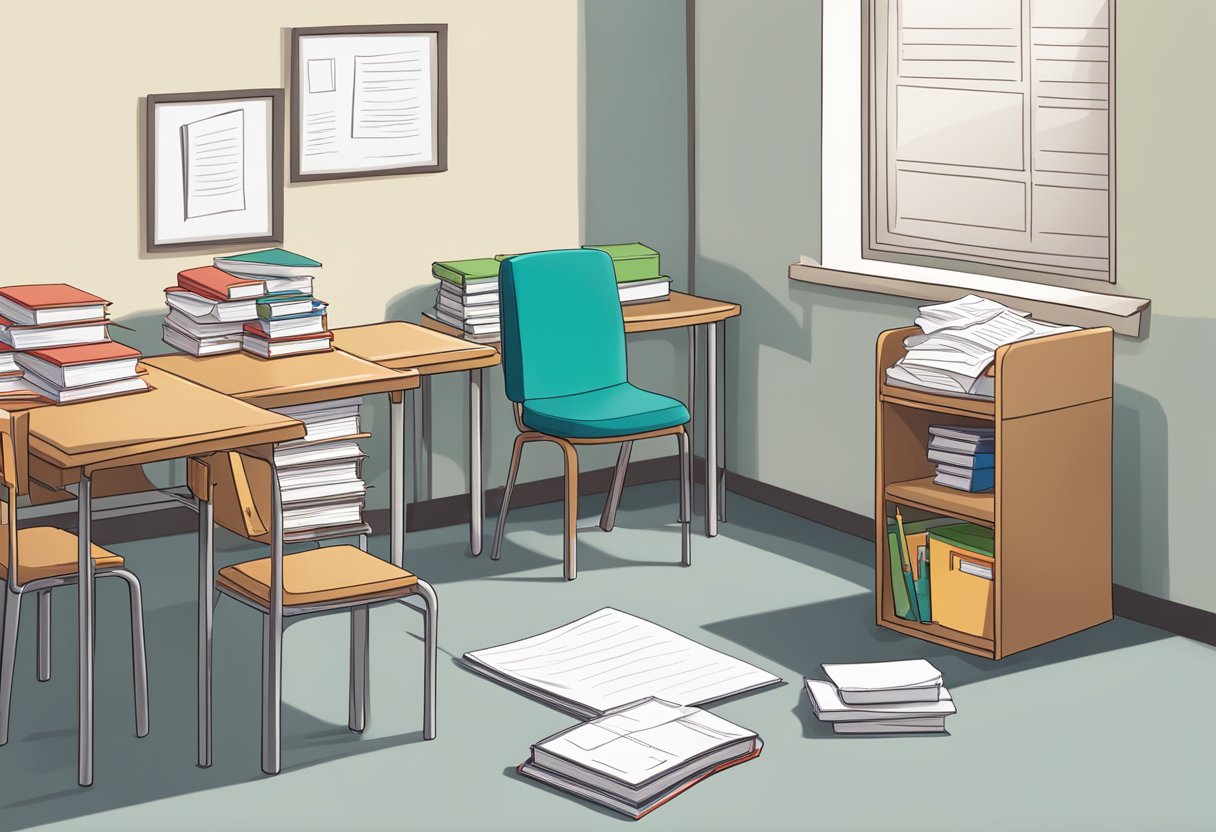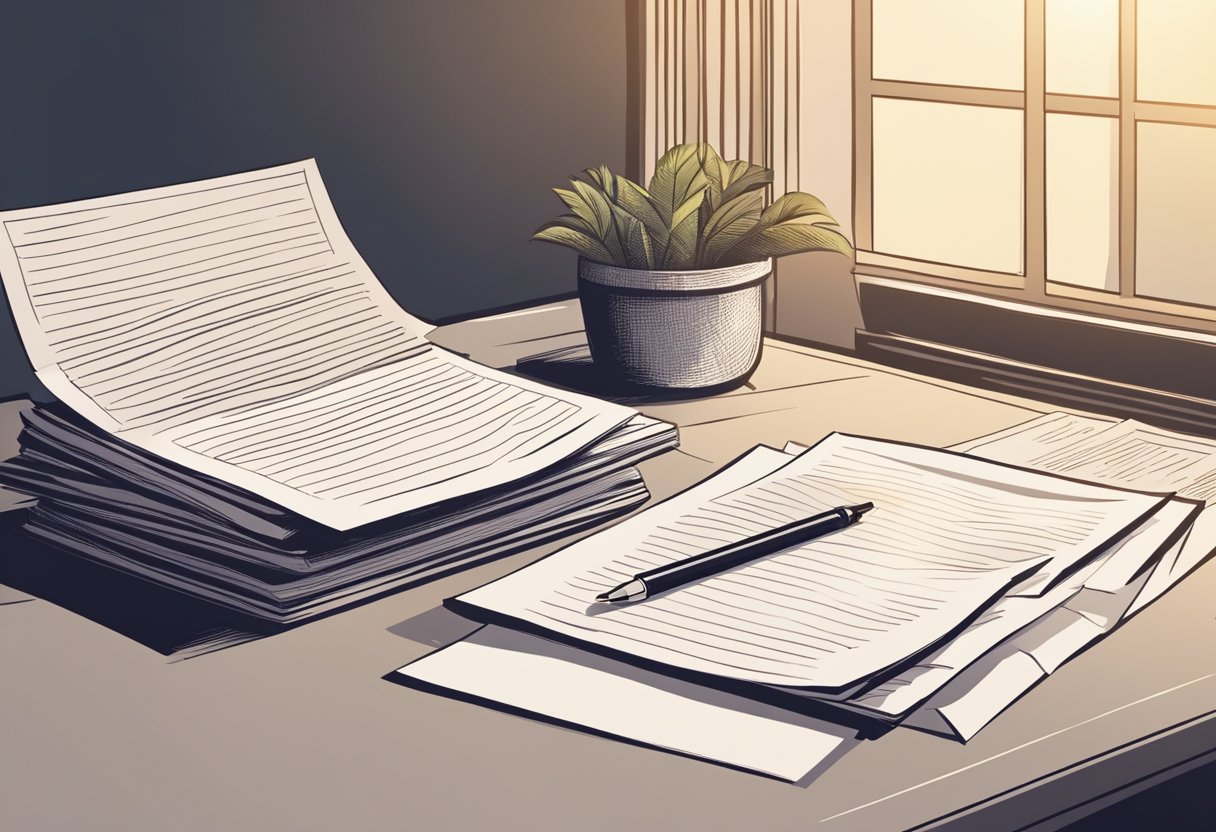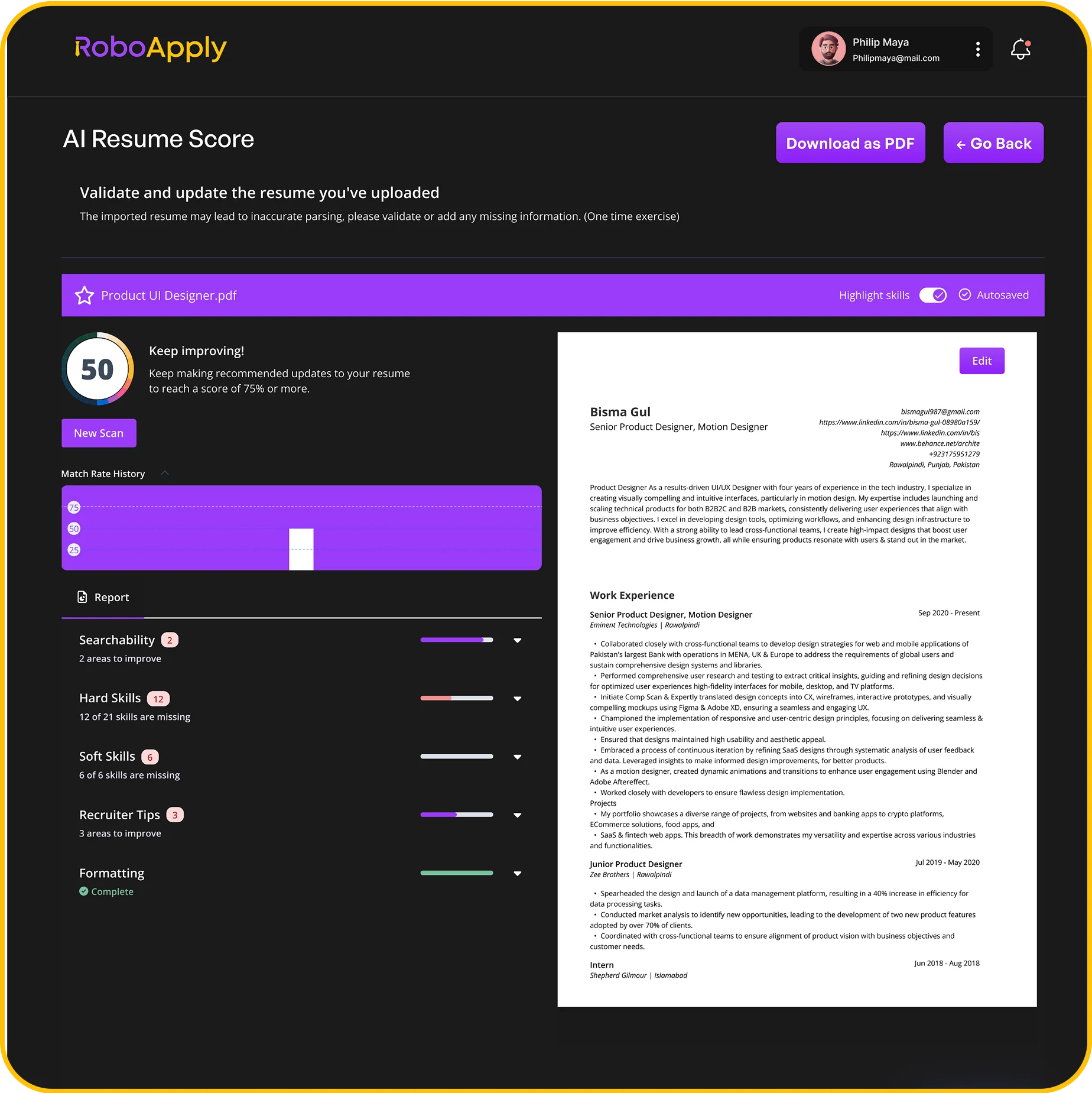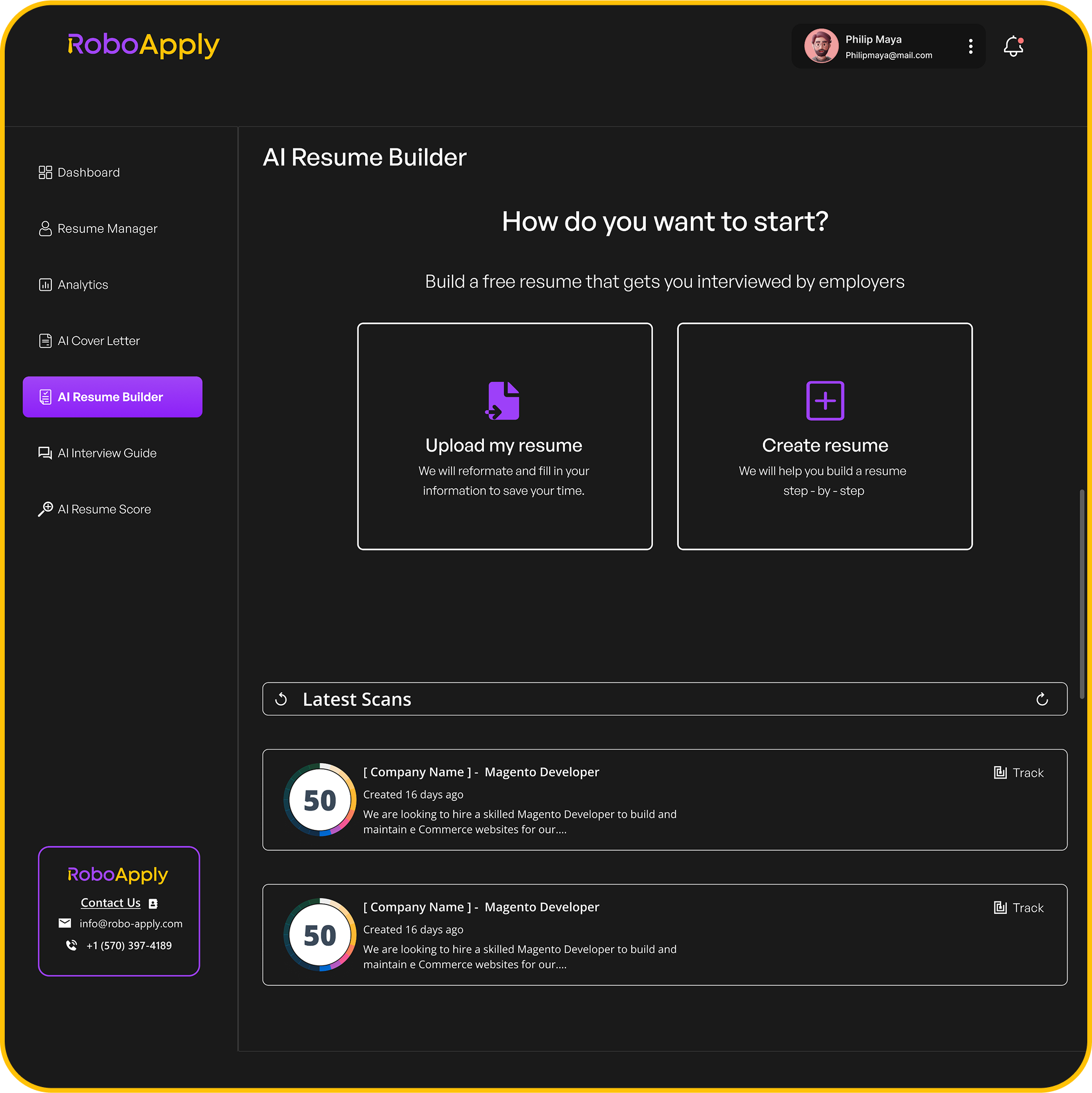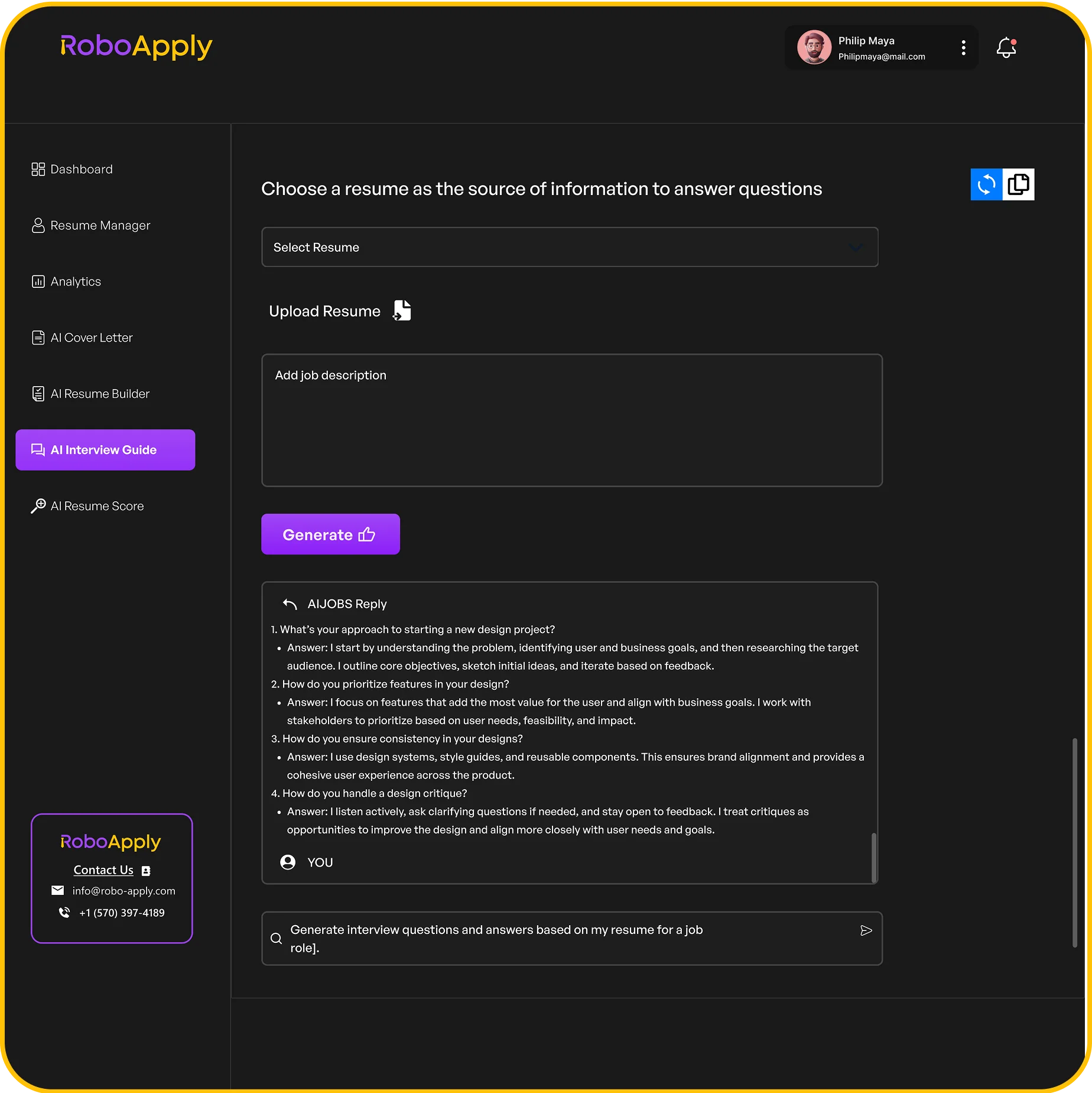Writing a resignation letter as a teacher can feel like a lot, especially if you’re not sure what to say or how formal you need to be. A clear, respectful resignation letter makes it easier to leave your teaching job on good terms—and honestly, it can open doors down the road. Plenty of teachers look for real examples before writing their own, hoping for a format that’s straightforward and gets the job done.
A solid teacher resignation letter should mention your last working day, maybe a quick reason for leaving (if you want), and a short thank you. Having an example to follow makes everything less intimidating. If you want more templates or ideas, you can check out these teacher resignation letter examples.
Key Takeaways
- Resignation letters for teachers work best when they’re simple and professional.
- Main things to include: your last day and a polite note.
- Examples and templates help make writing your own letter less stressful.
Understanding Teacher Resignation Letters
A teacher resignation letter is just a formal way to let your school know you’re leaving. It helps keep things organized for everyone and makes the transition smoother for both sides. Schools need time to find someone to fill your shoes, so sending a proper letter isn’t just polite—it’s kind of necessary.
Definition and Importance
A resignation letter for teachers is basically your official written notice to the administration that you’re stepping down. It’s important because it gives the school something on record and lets them start planning for your replacement.
A good resignation letter keeps things professional and positive. It gives everyone a chance to part on friendly terms. Schools usually want something in writing for their files, and some districts even require it.
Be sure to include your last working day, what position you’re leaving, and a thank you. Using a straightforward format shows you’re being professional about it. If you’re stuck, there are lots of teacher resignation letter templates to help you out.
Common Reasons for Leaving
Teachers resign for all sorts of reasons: maybe it’s family stuff, health, a new job, moving, or retirement.
Sometimes it’s about wanting to grow professionally or just feeling ready for a change. Work stress, not seeing eye to eye with administration, or feeling unsupported can also be factors. Limited resources or tough working conditions push some teachers to leave, too.
Whatever your reason, it’s usually best to keep your explanation brief and upbeat. Most resignation letters don’t get into too much detail.
Notice Period Requirements
Most schools (and districts) expect teachers to give a certain notice period before leaving. That’s the time between when you hand in your resignation and your last day.
Usually it’s two weeks to a month, but contracts or local rules sometimes ask for more. If you skip the notice, it could hurt your professional reputation or make it harder to get another teaching job.
Check your contract or talk to HR to be sure about your notice period. Always include your final working day in your letter to avoid confusion. For more on this, here’s a guide to teacher resignation letters.
Key Components of a Teacher Resignation Letter
A decent resignation letter should say you’re resigning, thank the school, and give enough notice. The way you write it matters—keep it clear, polite, and considerate.
Essential Elements to Include
Start with the date at the top. Address your letter to the right person—usually the principal or HR manager.
Get to the point early: say you’re resigning and mention your last working day. That way, there’s no confusion about when you’re leaving.
You can add a brief reason for leaving, but that’s optional. Make sure your contact info is somewhere in there, and finish with a polite closing and your signature.
Here’s a quick sample structure:
| Part | Details |
|---|---|
| Date | Top of the letter |
| Address | Principal or whoever needs to get it |
| Statement | Clear you’re resigning |
| Effective Date | Your last day |
| Closing/Signature | Courteous signoff and your name |
If you want more examples, check out this teacher resignation letter guide.
Expressing Gratitude and Professional Tone
It’s always a good idea to thank the school or your boss. Showing appreciation for your time there helps keep things positive.
Stick to a calm, polite, and professional tone. Even if you’re leaving for tough reasons, don’t use the letter to vent. It pays off later if you need a reference.
Some phrases that work:
- I appreciate the support and guidance during my employment.
- Thank you for the opportunities to grow as an educator.
A respectful tone shows maturity and leaves a good impression. More tips and sample wording are in these teacher resignation letter examples.
Providing Sufficient Notice
Giving enough notice is crucial. Schools need time to sort things out and make plans for students. Two weeks is usually the minimum, but contracts can require more.
Be clear about your last day in the letter. It helps everyone plan and makes the transition less bumpy.
Letting them know early avoids headaches for the school and looks good for you. Sometimes, state or district rules require more notice, so double-check before sending your letter. For more on best practices, check this teacher resignation letter overview.
How to Write a Teacher Resignation Letter
Writing a resignation letter can be nerve-wracking, but if you break it down into steps, it’s not so bad. Keeping it respectful helps keep your bridges intact.
Step-by-Step Writing Guide
Open with a polite greeting to your principal or supervisor. Right away, say you’re resigning from your teaching job and mention your last day. For example: “I am writing to notify you of my resignation from my position at Lincoln Elementary, effective June 14, 2025.” That gives the school time to plan.
If you want, give a brief reason for leaving, but you can also skip it. Something like, “I have decided to pursue another opportunity,” works if you don’t want to get into details.
Offer to help with the transition—maybe by helping find a replacement or prepping lesson plans. It’s a nice gesture that shows professionalism.
Wrap up by thanking the school for the experience. Sign off with something like “Sincerely,” and your name. For more help, here’s a step-by-step resignation letter guide.
Tips for Writing a Teacher Resignation Letter
Keep your tone respectful and friendly, no matter why you’re leaving. Don’t use the letter to air grievances about coworkers or the school.
Keep it short—one page is plenty. Use simple language and avoid getting too wordy.
Double-check for typos and grammar mistakes. Print and sign the letter, or send it as a PDF if you’re emailing.
State your last working day clearly and make sure you’re giving enough notice. Most schools expect at least two weeks.
If you need more inspiration, you can always look at other teachers’ resignation letters for ideas.
Teacher Resignation Letter Examples
Teachers leave for all kinds of reasons—personal stuff, new career goals, or just unexpected life changes. The best resignation letters are clear about your last day and, if you want, your reason for leaving. Getting the format right helps you leave on good terms and keeps professional relationships intact.
Standard Resignation Letter Sample
A standard resignation letter will have the date, school name, recipient, your statement of resignation, and your last day. It’s polite, short, and to the point—most teachers use this when leaving at the end of a school year or after their contract is up.
Example:
Dear [Principal’s Name],
I am writing to let you know that I am resigning from my position as [Your Position] at [School Name], effective [Last Working Day].
Thank you for the support during my time here. I have valued the experiences and growth I gained with [School Name].
Sincerely,
[Your Name]
Simple, right? Letters like this get the resignation process started and help things go smoothly. For more templates, check out Indeed’s teacher resignation letter guide.
Immediate Resignation Letter Example
Sometimes you just can’t finish out your term and need to resign right away. An immediate resignation letter should clearly state that you’re leaving effective immediately. Even with short notice, keep it professional and respectful.
Example:
Dear [Principal’s Name],
I am submitting my immediate resignation from my position at [School Name], effective today, [Date].
I apologize for the short notice. Thank you for the opportunities and support during my time here.
Sincerely,
[Your Name]
Immediate resignation might be necessary for emergencies or family situations. If you want a sample, you can find one in this resignation letter example PDF.
Resignation Letter for Personal Reasons
When personal matters come up and a teacher needs to step away, a resignation letter for personal reasons keeps things simple and private. There’s no need to lay out every detail—just mention that the decision is personal.
Example:
Dear [Principal’s Name],
I am resigning from my position as [Your Position] at [School Name], effective [Last Working Day], due to personal reasons.
Thank you for your understanding and support. I appreciate the experiences I have had at [School Name].
Best regards,
[Your Name]
This kind of letter keeps things respectful and meets the requirements. If you want more ideas, here’s a guide on writing a resignation letter for personal reasons.
Professional Development and Growth Opportunities
Sometimes, teachers leave because they’re chasing further education, a new career path, or maybe a promotion somewhere else. In that case, the resignation letter should mention the reason, express some gratitude, and hint at what’s next.
Example:
Dear [Principal’s Name],
I am writing to resign from my role at [School Name], effective [Last Working Day], as I have been offered a position that allows for greater professional development.
I have enjoyed working at [School Name] and am thankful for the growth opportunities I found here.
Sincerely,
[Your Name]
Being open about your decision can help keep things positive. If you’re looking for more templates, you might check out this teacher resignation letter template that focuses on professional growth.
The Transition Process After Resignation
Once a resignation letter is in, a teacher’s focus shifts to making the change as smooth as possible for students and coworkers. It’s really about keeping things steady for everyone while wrapping up essential tasks.
Ensuring a Smooth Transition
Letting the administration know your exact last day early on is a big help. That way, they can plan ahead. It’s also a good idea to pull together lesson plans and any materials needed for the rest of the term.
A few things that make the transition easier:
- Sorting materials by subject and week
- Clearly labeling files and handouts
- Sharing digital resources with whoever’s taking over
Staying in touch with colleagues and school leaders can help answer questions as they crop up. Jotting down notes on student progress is a thoughtful touch for the next teacher. Sometimes, schools might even ask for help finding or training your replacement—more on the transition process here.
Offering Transition Assistance
If you’re up for it, meeting with the incoming teacher (in person or virtually) can make a world of difference. You can walk them through routines, student quirks, or projects that are mid-way.
Ways to lend a hand:
- Making a quick checklist of classroom rules and routines
- Pointing out special learning plans for students
- Sharing info on substitute materials or tech tools
Some teachers also write a handover note or sit in on transition meetings. A little support here goes a long way—students barely notice the change, and the new teacher starts off on the right foot. Plus, it’s just good teamwork.
Conclusion
Writing a resignation letter as a teacher isn’t just a formality—it’s a way to show respect and keep things professional.
A solid letter usually includes the date, a clear statement about leaving, and your last working day. Most teachers say thanks for the experience and offer to help with the handover.
A few things to keep in mind:
- Keep it brief and to the point
- Stay polite
- Give enough notice
- Show some gratitude
Templates are a lifesaver if you’re not sure where to start. For more advice and examples, check out this guide on how to write a teacher resignation letter.
Tip: Double-check your school’s policy on notice periods and any extra steps before you hit send.
A clear, respectful letter leaves the right impression and helps everyone move forward.
Frequently Asked Questions
Teachers tend to have a lot of questions about writing resignation letters. What do you actually need to include? How formal should it be? How much notice is enough? And what’s the best way to explain why you’re leaving?
What are the key components to include in a teacher’s resignation letter?
Basically, you want a clear statement that you’re resigning, your last day, and a bit of thanks for the opportunity.
You might also mention any plans to help with the transition. If you want to keep it simple, this template covers the basics.
How can a teacher write a respectful resignation letter for personal reasons?
If you’re leaving for personal reasons, just state it simply—no need to overshare.
Keep the tone polite and professional. A quick thank you and maybe an offer to help out during the transition is usually enough.
What should a teacher mention in a resignation letter when leaving due to health issues?
If health is the reason, you can mention it briefly without going into detail.
Include your last day and a short thank you. It’s fine to say you appreciate the school’s understanding and support.
How much notice is typically required when a teacher resigns from their position?
Most schools ask for two to four weeks’ notice.
But contracts vary, so it’s smart to check yours. Giving proper notice helps the school plan—here’s more on teacher resignation notice.
What is the proper format for a teacher’s immediate resignation letter?
For immediate resignation, make it clear in the subject and opening that you’re leaving right away.
If you can, briefly explain why (but don’t feel pressured to overshare). Keep it polite—here are some sample teacher resignation letters if you need inspiration.
How should a teacher approach writing a resignation letter to the principal?
When you’re writing to the principal, it’s best to keep things professional but also a bit personal—after all, you’ve probably worked together for a while. Address them by name, clearly mention that you’re resigning, and don’t forget to specify your final working date. It never hurts to add a word of thanks or offer to help out during the transition, even if you’re ready to move on. If you’re looking for inspiration, there are plenty of examples and templates floating around online.



